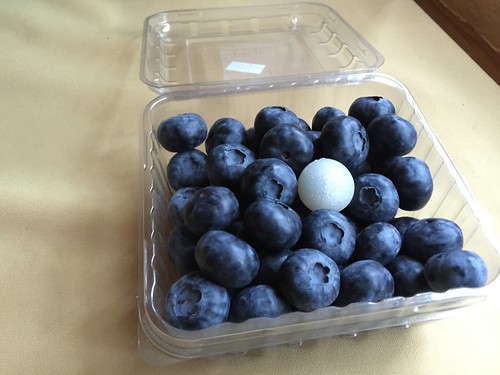
Although automation in agriculture is often synonymous with efficiency, that has not been the case with harvesting and processing berries. That is about to change.
Automated berry processing systems often damage the fruit, which results in lower profitability for growers and marketers. To counter this, a University of Georgia (UGA)-led research team is developing an advanced sensor system to help harvest and process fresh-market highbush blueberries at high-speed and with low yield loss.
The second-generation berry impact recording device (BIRD) is one part of a multi-faceted effort being funded by the U.S. Department of Agriculture’s National Institute of Food and Agriculture (NIFA). In addition to BIRD, researchers are using the nearly $2.4 million Specialty Crop Research Initiative grant to develop high throughput phenotyping technology and a semi-mechanical harvest-aid system. They will also investigate microbial contamination points along the harvest and postharvest process.
“Blueberries will invariably interact with various machine parts or contacting surfaces that create bruises and reduce fruit quality,” said Dr. Changying “Charlie” Li, associate professor at the University of Georgia’s College of Engineering. “The BIRD sensor will help farmers deliver higher quality fresh market fruit with less bruises during harvesting, help marketers reduce bruising during postharvest handling and transportation, and allow consumers to buy higher quality fresh market blueberries at lower prices due to higher harvest efficiency and pack out rate.”
BIRD is a wireless data logging sensor that is similar to a blueberry in shape, size, weight, and surface physical properties. BIRD is placed into the handling process where the sensor is subjected to the same mechanical stress as a real blueberry. Along the way, BIRD quantitatively measures and records all the mechanical impacts it encounters. Impact data are saved in a memory chip.
The team of 14 researchers from 10 institutions includes expertise in engineering, plant science, microbiology, economics, and social science. “We believe it’s necessary to take a holistic approach to address the critical and challenging issues facing the blueberry industry,” Li said.
Although the team is focusing on the $1 billion-per-year blueberry industry in the United States, they know that BIRD technology is not limited to that crop. “It is the first of its kind to study small fruits,” Li said. “It can not only be used to study blueberries, but also be used for other small fruits such as cranberries, cherries, and olives. It has drawn great interest from the industry not only in the United States, but also from South America and Australia.”
Li’s research partners are located at Michigan State University, University of Florida, Penn State University, Washington State University, North Carolina State University, Oregon State University, Mississippi State University, University of California at Berkeley, and the USDA Agricultural Research Service’s Appalachian Fruit Research Station in Kearneysville, West Virginia.
NIFA invests in and advances agricultural research, education and extension and seeks to make transformative discoveries that solve societal challenges.

